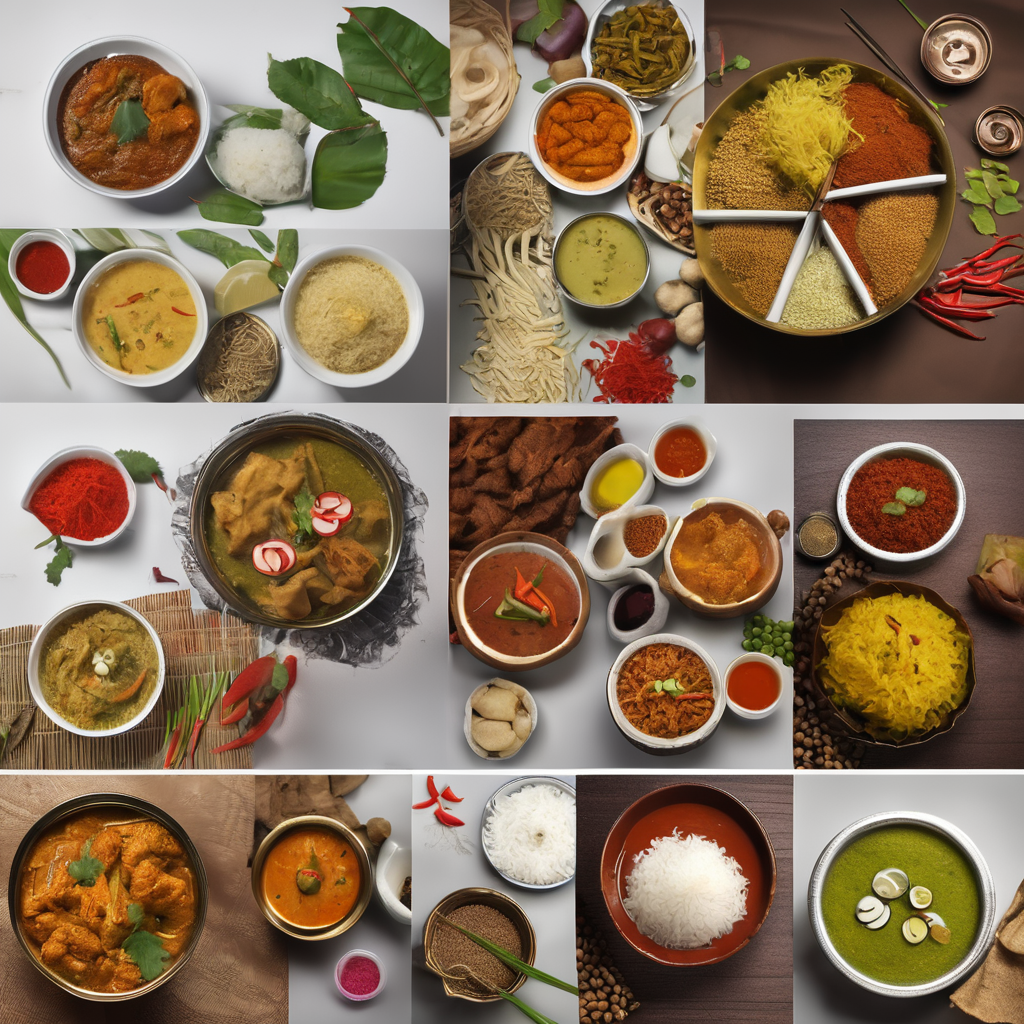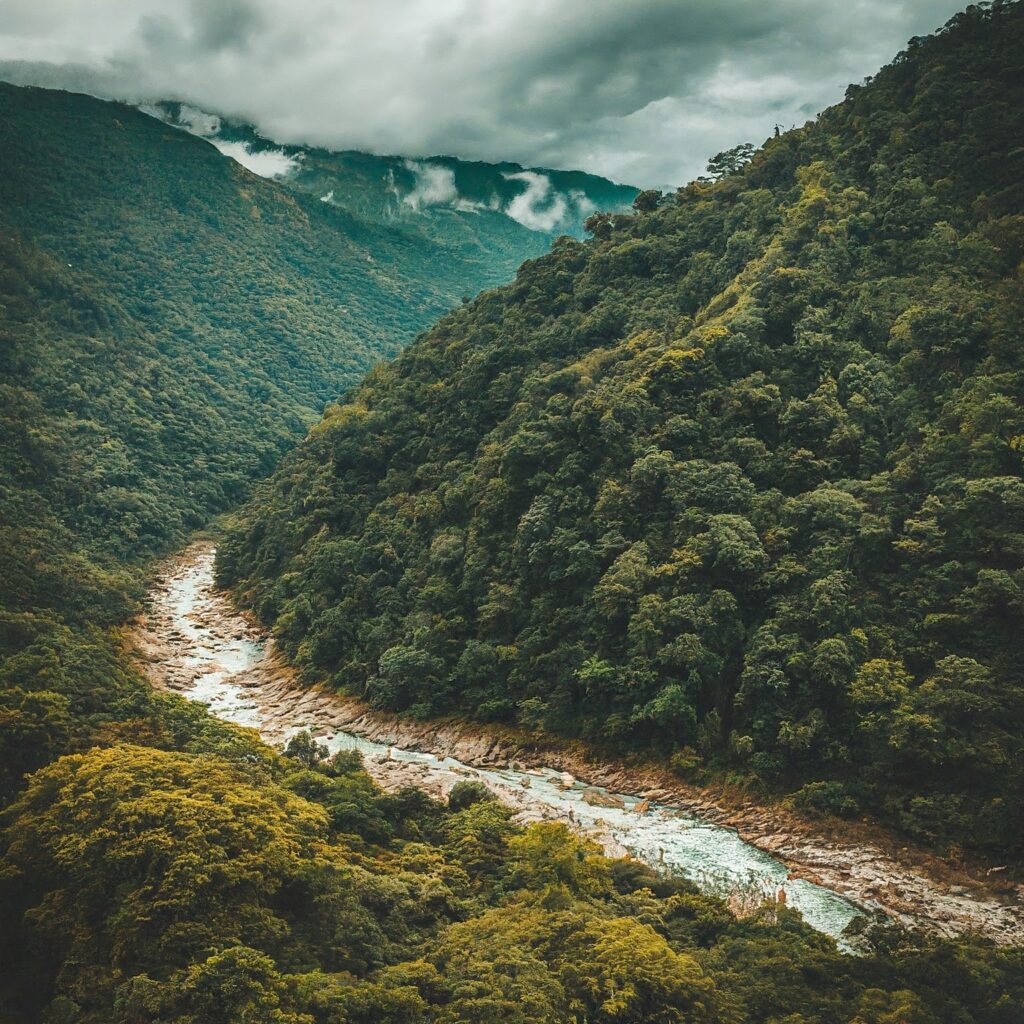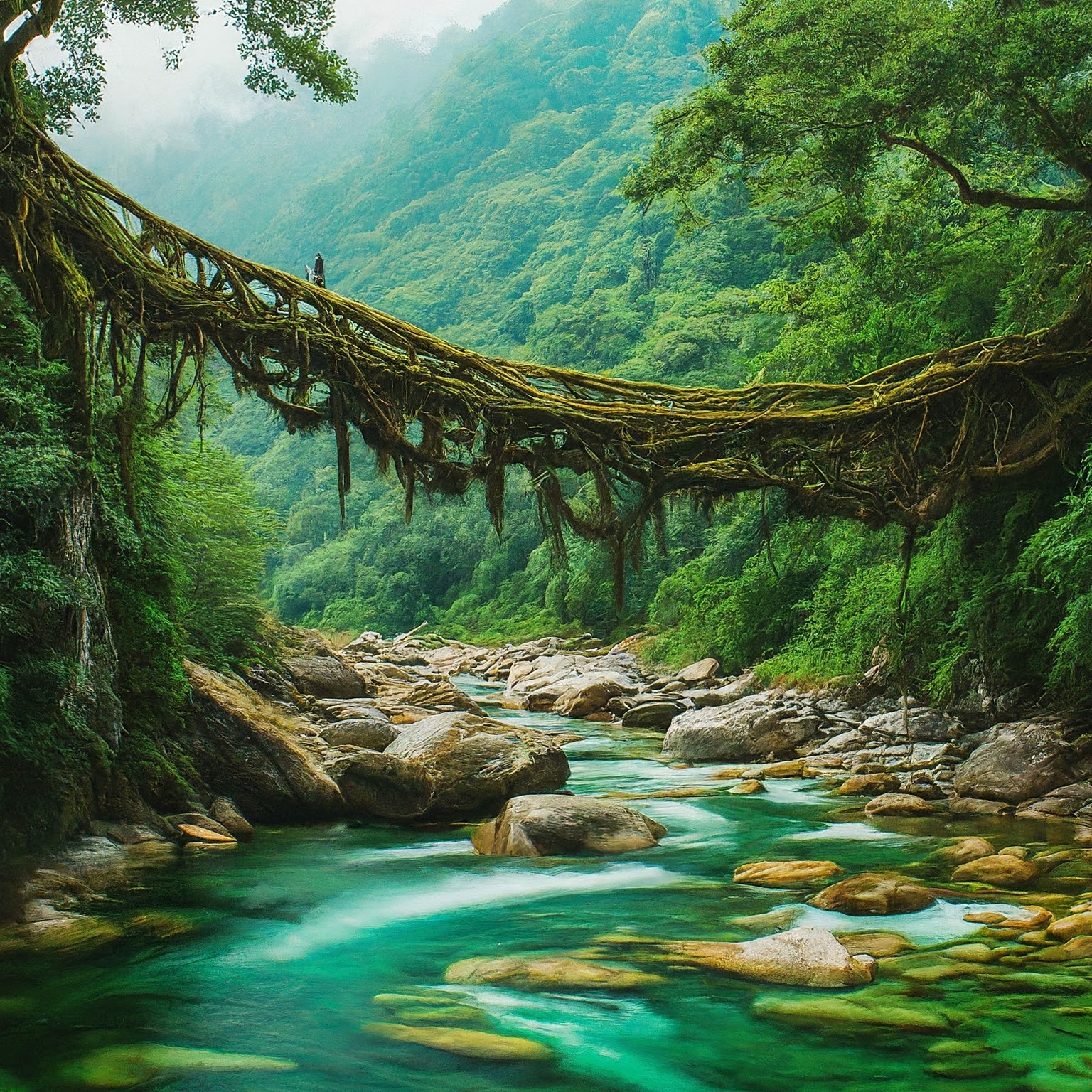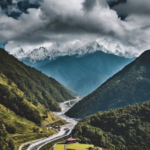“Traveling to Northeast India offers a journey into a realm of breathtaking natural beauty, vibrant cultures, and diverse traditions.”
Explore mist-covered valleys, dense forests, and cascading waterfalls, while immersing yourself in the warmth of local hospitality. Indulge in delectable cuisines, witness colorful festivals, and embark on adventures like trekking in the Himalayas or exploring remote tribal villages. Each state in the region offers its own unique charm, making North East India a treasure trove for intrepid travelers seeking authentic experiences off the beaten path.

Main Attraction
Northeast India is blessed with an array of captivating attractions that cater to a variety of interests. Some of the main attractions include:
- Kaziranga National Park (Assam): Renowned for its population of endangered one-horned rhinoceroses, Kaziranga is a UNESCO World Heritage Site and a haven for wildlife enthusiasts.
- Tawang Monastery (Arunachal Pradesh): This iconic monastery, perched atop a hill, is one of the largest in India and offers stunning panoramic views of the surrounding Himalayan landscape.
- Living Root Bridges (Meghalaya): Witness the extraordinary craftsmanship of these natural bridges, formed by guiding the roots of trees over centuries, in the lush forests of Meghalaya.
- Dzukou Valley (Nagaland): Trek through this enchanting valley, adorned with vibrant flowers and surrounded by rolling hills, for an unforgettable experience in the lap of nature.
- Gurudongmar Lake (Sikkim): Situated at a breathtaking altitude, this sacred lake offers awe-inspiring views of the snow-capped peaks of the Himalayas and is revered by both Buddhists and Hindus.
- Mawlynnong Village (Meghalaya): Dubbed as the “cleanest village in Asia,” Mawlynnong is a charming destination known for its pristine surroundings and eco-friendly practices.
- Dzongu (Sikkim): Explore the untouched beauty of Dzongu, home to the Lepcha tribe, where you can immerse yourself in traditional culture amidst lush forests and gushing rivers.
- Majuli Island (Assam): The largest river island in the world, Majuli offers a serene escape with its tranquil atmosphere, traditional Assamese villages, and vibrant Satras (Vaishnavite monasteries).
- Cherrapunji and Mawsynram (Meghalaya): Discover the wettest places on earth, where dramatic landscapes are adorned with cascading waterfalls, deep gorges, and mysterious caves.
- Aizawl (Mizoram): Explore the bustling capital city of Mizoram, known for its vibrant culture, traditional handicrafts, and scenic viewpoints offering panoramic vistas of the surrounding hills.
These are just a few highlights of the myriad attractions waiting to be explored in North East India,
Foods to Taste.
The culinary landscape of North East India is as diverse and vibrant as its cultural tapestry. Here are some of the delicious foods you can savor in this region:

- Assam Tea: Assam is renowned for its robust and flavorful tea, which is enjoyed worldwide. A cup of Assam tea is a must-try for any visitor to the region.
- Momos: These Tibetan dumplings have found their way into the hearts (and stomachs) of people across India. In North East India, momos are often served with spicy sauces and fillings ranging from vegetables to meats.
- Assamese Thali: Indulge in a traditional Assamese thali, which typically includes rice, dal (lentils), various vegetable dishes, fish or meat preparations, and a tangy chutney. Each item is bursting with unique flavors.
- Bamboo Shoot Curry: Bamboo shoots are a staple ingredient in North East Indian cuisine. Cooked in various styles with local spices and herbs, bamboo shoot curry is a delicacy enjoyed across the region.
- Pork Dishes: Pork is a popular meat in North East India, and there are countless delicious preparations to try, such as smoked pork curry, pork with bamboo shoots, and pork with fermented soybeans.
- Apong (Rice Beer): Apong, or rice beer, is a traditional alcoholic beverage brewed by several ethnic groups in North East India. It is often served during festivals and celebrations and has a unique flavor profile.
- Naga Cuisine: Naga cuisine is characterized by its use of fiery chilies and indigenous herbs. Dishes like Axone (fermented soybean) curry, smoked meats, and fermented bamboo shoot salads showcase the bold flavors of Naga cooking.
- Thukpa: This hearty Tibetan noodle soup is popular in the mountainous regions of North East India. It’s made with noodles, vegetables, and sometimes meat, simmered in a flavorful broth.
- Mishing Poro Aloo: A dish from the Mishing tribe of Assam, Poro Aloo features duck meat cooked with potatoes and seasoned with traditional spices, offering a delightful blend of flavors.
- Chhang: Another traditional alcoholic beverage, Chhang is a millet-based beer enjoyed by various communities in North East India. It’s often served during social gatherings and festivities.
These are just a few highlights of the diverse and delicious foods you can experience in North East India. Each state in the region boasts its own culinary traditions, making it a paradise for food lovers.
Best time to visit.
The best time to visit Northeast India largely depends on the specific activities you plan to undertake and the regions you wish to explore. However, in general, the ideal time to visit Northeast India is during the cooler and drier months, which typically fall between October and April. Here’s a breakdown of the seasons and considerations for each:
- Autumn (October to November):
- This period is characterized by pleasant weather with clear skies and comfortable temperatures.
- It’s an excellent time for trekking, wildlife safaris, and outdoor activities in most parts of the region.
- Festivals like Durga Puja in Assam and Diwali are celebrated during this time, offering a chance to experience local culture and traditions.
- Winter (December to February):
- Winter in Northeast India brings cold temperatures, especially in higher altitude areas like Sikkim and Arunachal Pradesh.
- However, the weather remains mostly dry and sunny, making it a good time for sightseeing and exploring the region’s natural beauty.
- It’s also the peak season for birdwatching in places like Kaziranga National Park and Nameri National Park.
- Spring (March to April):
- Spring marks the onset of warmer temperatures and the beginning of the blooming season in many parts of Northeast India.
- This is an ideal time to witness the region’s lush landscapes, vibrant flowers, and blooming rhododendrons.
- It’s also a good time for cultural events and festivals, such as Bihu in Assam and Losar in Sikkim.
While these months generally offer favorable weather conditions for travel, it’s essential to note that North East India is geographically diverse, and weather patterns can vary significantly from one region to another. For example, the mountainous areas may experience colder temperatures and occasional snowfall during the winter months, while the plains and valleys may remain relatively mild.
It’s also worth considering that the monsoon season, which typically occurs from May to September, brings heavy rainfall to the region, making travel challenging and some areas inaccessible due to landslides and flooding. Therefore, it’s advisable to avoid visiting North East India during the monsoon season unless you specifically plan to experience the region’s lush greenery and are prepared for the associated travel disruptions.

How to go ?
Getting to North East India usually involves a combination of transportation modes, including air, rail, and road, depending on your starting point and destination within the region. Here’s a general overview of how to reach North East India:
- By Air:
- The most convenient way to reach North East India from other parts of the country is by air. The region is served by several major airports, including:
- Lokpriya Gopinath Bordoloi International Airport in Guwahati, Assam
- Imphal International Airport in Manipur
- Agartala Airport in Tripura
- Lengpui Airport in Aizawl, Mizoram
- Dimapur Airport in Nagaland
- Bir Tikendrajit International Airport in Imphal, Manipur
- These airports are well-connected to major cities like Delhi, Kolkata, Mumbai, and Bangalore, with regular flights operated by various airlines.
- The most convenient way to reach North East India from other parts of the country is by air. The region is served by several major airports, including:
- By Rail:
- North East India is connected to the rest of the country by a network of railways, although the connectivity is not as extensive as in other regions.
- The major railway station in the region is Guwahati Railway Station in Assam, which serves as a gateway to North East India. It is well-connected to cities like Delhi, Kolkata, Mumbai, and Bangalore.
- Other important railway stations in the region include Dimapur Railway Station in Nagaland, Silchar Railway Station in Assam, and Dibrugarh Railway Station in Assam.
- By Road:
- North East India is connected to neighboring states and regions by a network of national highways and state highways.
- You can travel to North East India by road from neighboring states like West Bengal, Bihar, and Uttar Pradesh.
- However, road travel to North East India from other parts of the country may involve long distances and multiple stops, so it’s essential to plan your journey accordingly.
- By Bus:
- State-run and private buses operate regular services to North East India from neighboring states.
- Luxury and semi-sleeper buses are available for long-distance travel, providing a comfortable option for those traveling by road.
Once you reach North East India, local transportation options such as taxis, buses, and shared jeeps are available for traveling within the region and exploring its various attractions. It’s advisable to plan your transportation in advance, especially if you’re traveling during peak tourist seasons.
Travel Tips:
Traveling to Northeast India can be a rewarding and enriching experience, but it’s essential to be well-prepared for the journey. Here are some travel tips to help you make the most of your visit:
- Research and Plan Ahead:
- Northeast India is a diverse region with a rich cultural heritage and varied landscapes. Before your trip, research the destinations you plan to visit, the local customs and traditions, and any travel advisories or restrictions that may apply.
- Pack Appropriately:
- The climate in Northeast India can vary from region to region and season to season. Pack clothing suitable for the weather conditions during your visit, including lightweight and breathable fabrics for the warmer months and warm layers for the cooler months. Don’t forget essentials like sturdy shoes for trekking and insect repellent for outdoor activities.
- Respect Local Customs and Traditions:
- Northeast India is home to diverse ethnic groups, each with its own customs, traditions, and languages. Show respect for the local culture by learning about and adhering to local customs and traditions, such as dress codes, greeting customs, and dining etiquette.
- Stay Aware of Permits and Restrictions:
- Some areas in Northeast India, especially those near international borders and tribal areas, may require special permits for entry. Make sure to check the permit requirements for the places you plan to visit and obtain them in advance if necessary. Additionally, be aware of any restrictions on photography or cultural activities in certain areas.
- Stay Hydrated and Eat Safe:
- Drink plenty of water to stay hydrated, especially if you’re traveling during the warmer months. When dining out, choose reputable restaurants and eateries, and opt for freshly cooked food to avoid foodborne illnesses. Be adventurous with trying local cuisine but exercise caution, especially if you have dietary restrictions or sensitivities.
- Be Prepared for Road Travel:
- Road conditions in Northeast India can vary, ranging from well-maintained highways to narrow and winding mountain roads. If you’re traveling by road, be prepared for long journeys and consider hiring a local driver who is familiar with the terrain. Keep essentials like water, snacks, and emergency supplies in your vehicle.
- Respect the Environment:
- Northeast India is known for its pristine natural beauty, so do your part to preserve the environment during your visit. Avoid littering, stick to designated trails while trekking, and follow Leave No Trace principles. Respect wildlife and their habitats by observing them from a distance and refraining from feeding or disturbing them.
- Stay Informed about Safety:
- While Northeast India is generally safe for travelers, it’s always a good idea to stay informed about local safety conditions and any potential risks. Keep abreast of current events and follow any travel advisories issued by your government or local authorities.
By following these travel tips and keeping an open mind, you can enjoy a memorable and fulfilling journey through the enchanting landscapes and vibrant cultures of Northeast India.

Travel Cost.
To provide an approximate cost of traveling to Northeast India in USD, let’s consider some average expenses based on common travel expenditures:
- Transportation:
- International flight (round trip from the US to Guwahati, Assam): $800 – $1500 (depending on the time of booking and airline).
- Internal flights or trains between cities within Northeast India: $50 – $200 per leg (depending on distance and class of travel).
- Local transportation within Northeast India (taxis, buses, shared jeeps): $5 – $20 per day (depending on distance and mode of transport).
- Accommodation:
- Budget guesthouses and homestays: $10 – $30 per night.
- Mid-range hotels: $30 – $80 per night.
- Luxury hotels and resorts: $100 and above per night.
- Food and Dining:
- Meals at local eateries and street food stalls: $2 – $5 per meal.
- Dining at mid-range restaurants: $5 – $15 per meal.
- Fine dining or upscale restaurants: $20 and above per meal.
- Permits and Entry Fees:
- Permit fees for certain areas: $5 – $50 per permit (depending on the location and duration).
- Entry fees to tourist attractions and national parks: $1 – $10 per person.
- Activities and Excursions:
- Guided tours, adventure activities, or cultural experiences: $10 – $100 per activity (depending on the type and duration).
- Miscellaneous Expenses:
- Souvenirs, tips, bottled water, and other miscellaneous expenses: $5 – $20 per day.
Keep in mind that these are approximate costs and can vary based on factors such as the time of year, the level of comfort and luxury you prefer, and your personal spending habits. Additionally, currency exchange rates may fluctuate, affecting the overall cost in USD. It’s advisable to research specific prices and budget accordingly based on your travel plans and preferences.
Sample Daily Budget:
Here’s a sample daily budget breakdown for traveling in Northeast India, presented in USD:
- Accommodation:
- Budget guesthouse or homestay: $15
- Mid-range hotel: $40
- Luxury hotel: $100
- Food and Dining:
- Breakfast at a local eatery: $3
- Lunch at a mid-range restaurant: $8
- Dinner at a street food stall: $4
- Total for meals: $15
- Transportation:
- Local transportation (taxis, buses, shared jeeps): $10
- Total for transportation: $10
- Activities and Excursions:
- Entry fee to a tourist attraction: $5
- Guided tour or activity: $20
- Total for activities: $25
- Miscellaneous Expenses:
- Bottled water and snacks: $5
- Souvenirs or miscellaneous purchases: $10
- Total for miscellaneous expenses: $15
Total Daily Budget:
- Budget Traveler: $55 – $60
- Mid-range Traveler: $80 – $85
- Luxury Traveler: $145 – $150
Keep in mind that this is a rough estimate, and actual daily expenses may vary depending on factors such as your travel style, specific destinations, and personal preferences. It’s always a good idea to budget a bit extra for unexpected expenses or indulgences along the way. Additionally, currency exchange rates and price fluctuations can affect the overall cost. Adjust your budget accordingly based on your individual circumstances and priorities.









